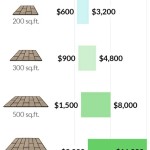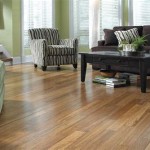Slate Flooring Tiles: Weighing the Pros and Cons
Slate flooring has long been a popular choice for homeowners seeking a natural, durable, and visually appealing surface. Its unique textured appearance and earthy tones can add a touch of sophistication and rustic charm to any space. However, like any flooring material, slate has its advantages and disadvantages. This article provides a comprehensive overview of the pros and cons of slate flooring tiles, enabling informed decisions about their suitability for specific needs and preferences.
Aesthetic Appeal and Design Versatility
One of the primary reasons for slate's enduring popularity is its inherent aesthetic appeal. The natural variations in color, texture, and veining within each tile create a one-of-a-kind surface that is difficult to replicate with manufactured materials. Slate tiles are available in a range of colors, including grays, blacks, greens, reds, and purples, allowing for diverse design possibilities. These colors can blend seamlessly within a variety of architectural styles.
Furthermore, slate tiles come in various shapes and sizes. From large format squares to smaller, more intricate patterns, the flexibility in design allows for incorporating slate into various room settings. The uneven surface and natural clefting of slate add depth and character, creating a visually interesting floor that can serve as a focal point in the room.
Slate's natural texture also provides a degree of slip resistance, making it a suitable choice for areas prone to moisture, such as bathrooms, kitchens, and entryways. While not entirely slip proof, the inherent roughness of the surface offers better traction compared to smoother materials like polished marble or ceramic tile.
The natural and organic look of slate complements a variety of decorating styles, from rustic farmhouse to modern minimalist. It can be paired with natural wood elements, metal accents, and a wide range of color palettes, making it a versatile option for almost any interior design scheme.
Durability, Longevity, and Maintenance
Slate is a metamorphic rock, meaning it was formed under intense heat and pressure. This geological process results in a dense and durable material that can withstand heavy foot traffic and resist scratches, chips, and stains. When properly installed and maintained, a slate floor can last for decades, adding lasting value to the property.
Slate's inherent durability extends to its resistance to water and moisture. It is naturally water-resistant, making it a suitable choice for areas with high humidity or potential water exposure. However, it is important to seal the slate to prevent staining and further enhance its water resistance.
While slate is relatively low maintenance, it does require regular cleaning to remove dirt and debris. Sweeping or vacuuming regularly is essential to prevent scratching from abrasive particles. Occasional damp mopping with a mild detergent is sufficient to maintain the floor's appearance. Avoid using harsh chemicals or abrasive cleaners, as they can damage the sealant and potentially discolor the slate.
Periodic resealing is recommended to maintain the slate's protective barrier and prevent staining. The frequency of resealing depends on the level of traffic and exposure to moisture, but typically it is recommended every one to two years in high-traffic areas and every three to five years in low-traffic areas.
Although slate is durable, it is not impervious to damage. Heavy objects can sometimes cause chips or cracks, particularly if dropped from a significant height. However, minor chips and scratches can often be repaired with epoxy or other patching compounds.
Cost Considerations and Installation Complexity
The cost of slate flooring can vary significantly depending on the quality, size, and origin of the tiles. Generally, slate is more expensive than ceramic or porcelain tile, but it may be comparable to other natural stone options like granite or marble. The cost of slate tiles typically includes the material cost, delivery charges, and installation fees.
Professional installation is highly recommended for slate flooring, as it requires specialized skills and knowledge. The uneven thickness of slate tiles can make it challenging to achieve a level and uniform surface. An experienced installer will be able to properly prepare the subfloor, cut and fit the tiles, and apply the appropriate sealant.
The subfloor must be structurally sound and level to prevent cracking or movement of the slate tiles. Any imperfections in the subfloor should be addressed before installation. A cement backer board is often used to provide a stable and moisture-resistant base for the slate tiles.
Cutting slate tiles requires specialized tools, such as a wet saw with a diamond blade. Due to the natural variations in the slate, it is important to carefully plan the layout of the tiles to minimize waste and ensure a visually appealing design. The grout lines between the tiles should be properly sealed to prevent water penetration and staining.
The total cost of a slate floor includes the initial cost of materials and installation, as well as the ongoing cost of maintenance and resealing. While the initial investment may be higher than other flooring options, the long-term durability and aesthetic appeal of slate can make it a worthwhile investment.
Potential Drawbacks and Considerations
Despite its numerous advantages, slate flooring does have some potential drawbacks that should be considered before making a decision. One of the main concerns is its inherent unevenness. While this texture contributes to its unique appearance and slip resistance, it can also make it difficult to clean and can be uncomfortable to walk on with bare feet. The uneven surface can also present challenges for furniture placement, as it may not sit perfectly level.
Slate can be a relatively cold surface, particularly in colder climates. This can be mitigated by installing radiant floor heating, which can provide warmth and comfort during the winter months. However, radiant floor heating adds to the overall cost of the installation.
The weight of slate can also be a concern, particularly in upper-story installations. It is important to ensure that the subfloor is structurally sound and can support the weight of the slate tiles. A structural engineer may need to assess the floor's load-bearing capacity before installation.
Slate is a natural material, and as such, it is susceptible to staining from certain substances, such as oil, grease, and acidic liquids. Promptly cleaning up spills is essential to prevent permanent staining. Regular sealing can help to protect the slate from stains, but it is not a foolproof solution.
The dark colors of some slate tiles can absorb heat, making them hotter to the touch in direct sunlight. This can be a concern in areas with large windows or skylights. Lighter-colored slate tiles may be a better option in these situations.
Finally, the natural variations in color and texture of slate can be a double-edged sword. While these variations contribute to its unique beauty, they can also make it difficult to match tiles if repairs are needed in the future. It is advisable to purchase extra tiles during the initial installation to have on hand for future repairs.

Pro Cons Of Natural Slate Flooring Claude Browns

Pros And Cons Of Slate Flooring Homeadvisor

Slate Tile Flooring Features Pros And Cons The Constructor

Slate Tile Flooring Pros And Cons Stone Pe Inc

Slate Flooring Review Pros And Cons Complete Guide 2024

Slate Tile Vs Travertine Porcelain Flooring Tiles Comparison Chart

Slate Flooring Pros Cons Types Installation Method

Stone Flooring Pros Cons Tile Urban Customs

Slate Look Porcelain Tile Pros And Cons Stone Depot

Slate Look Porcelain Tile Pros And Cons Stone Depot
Related Posts








